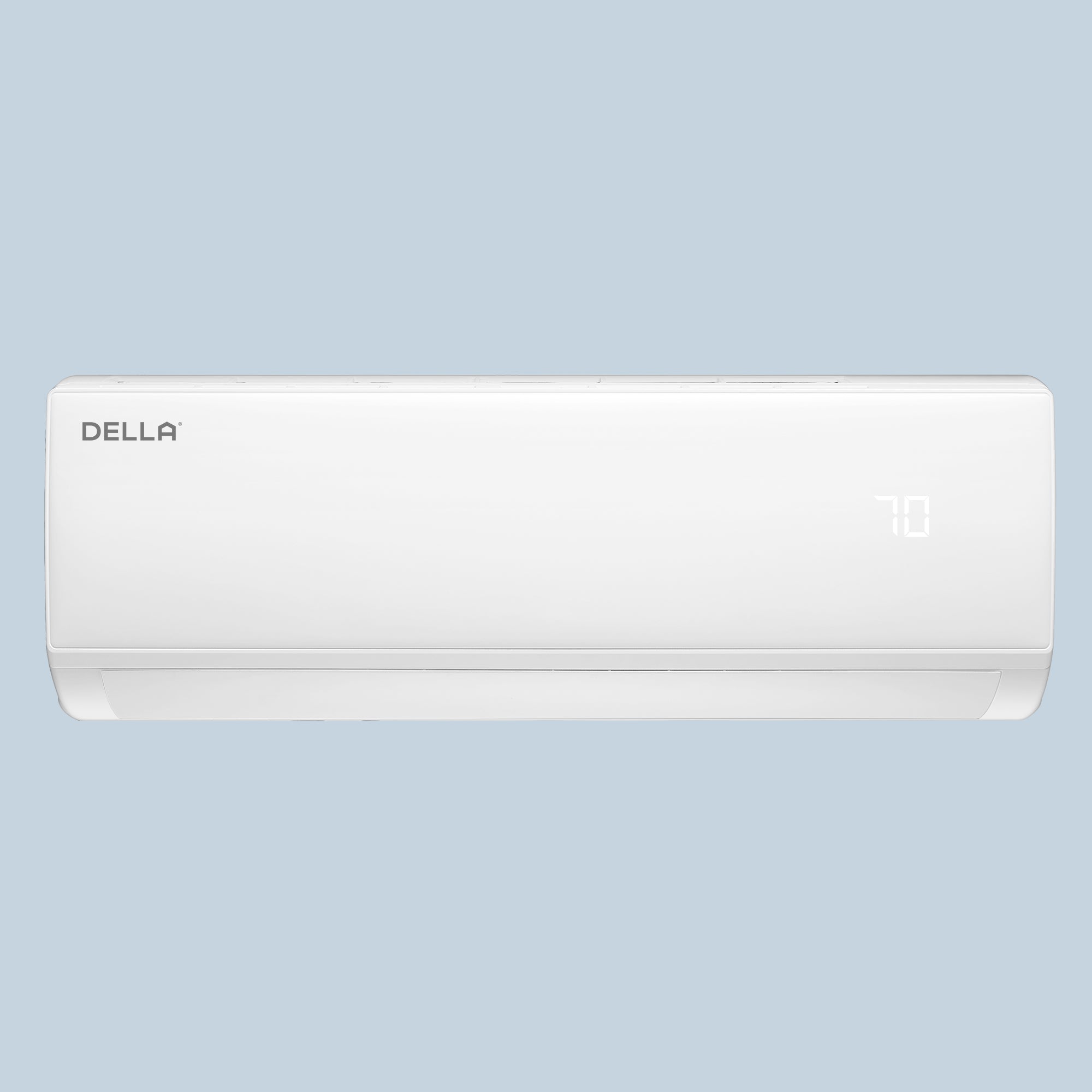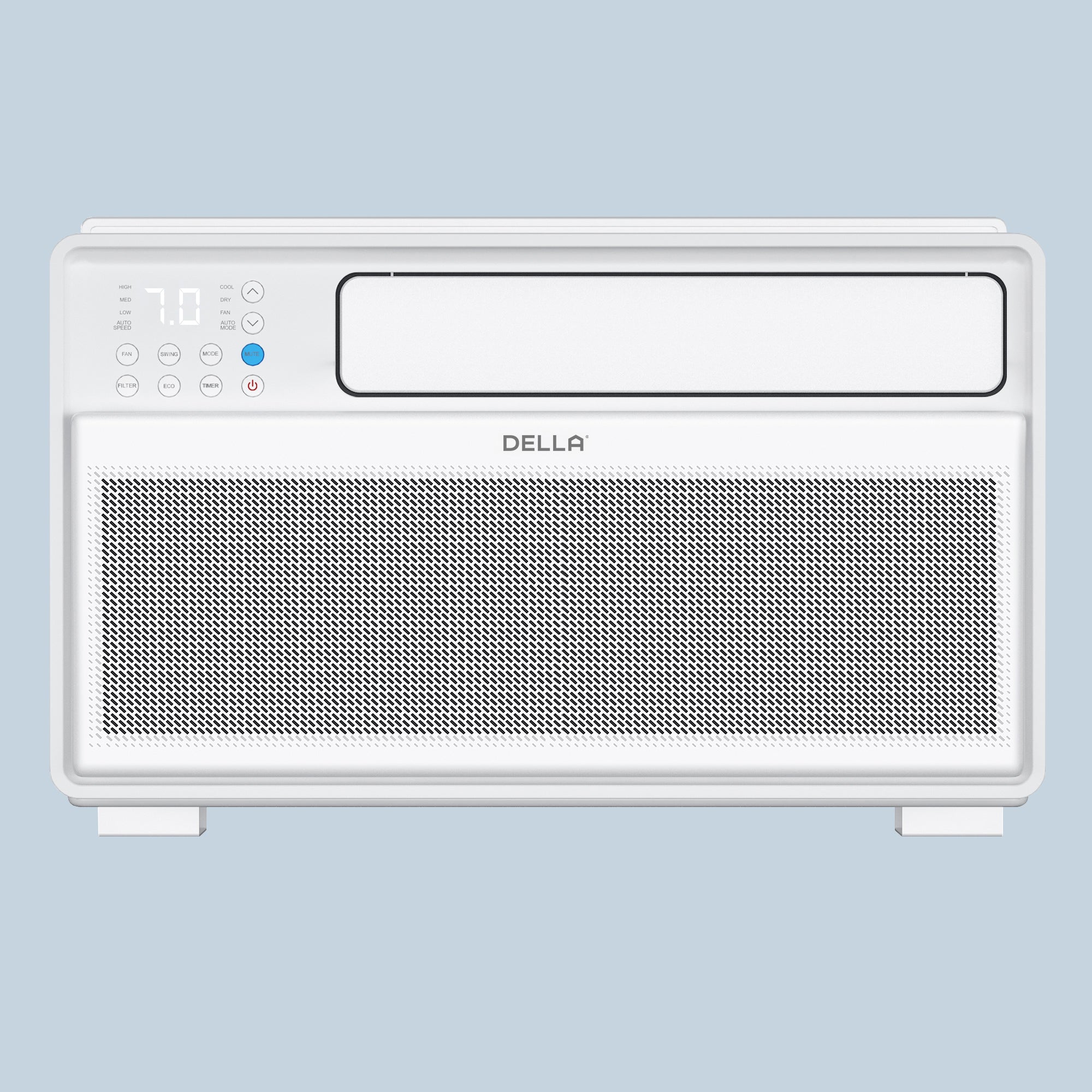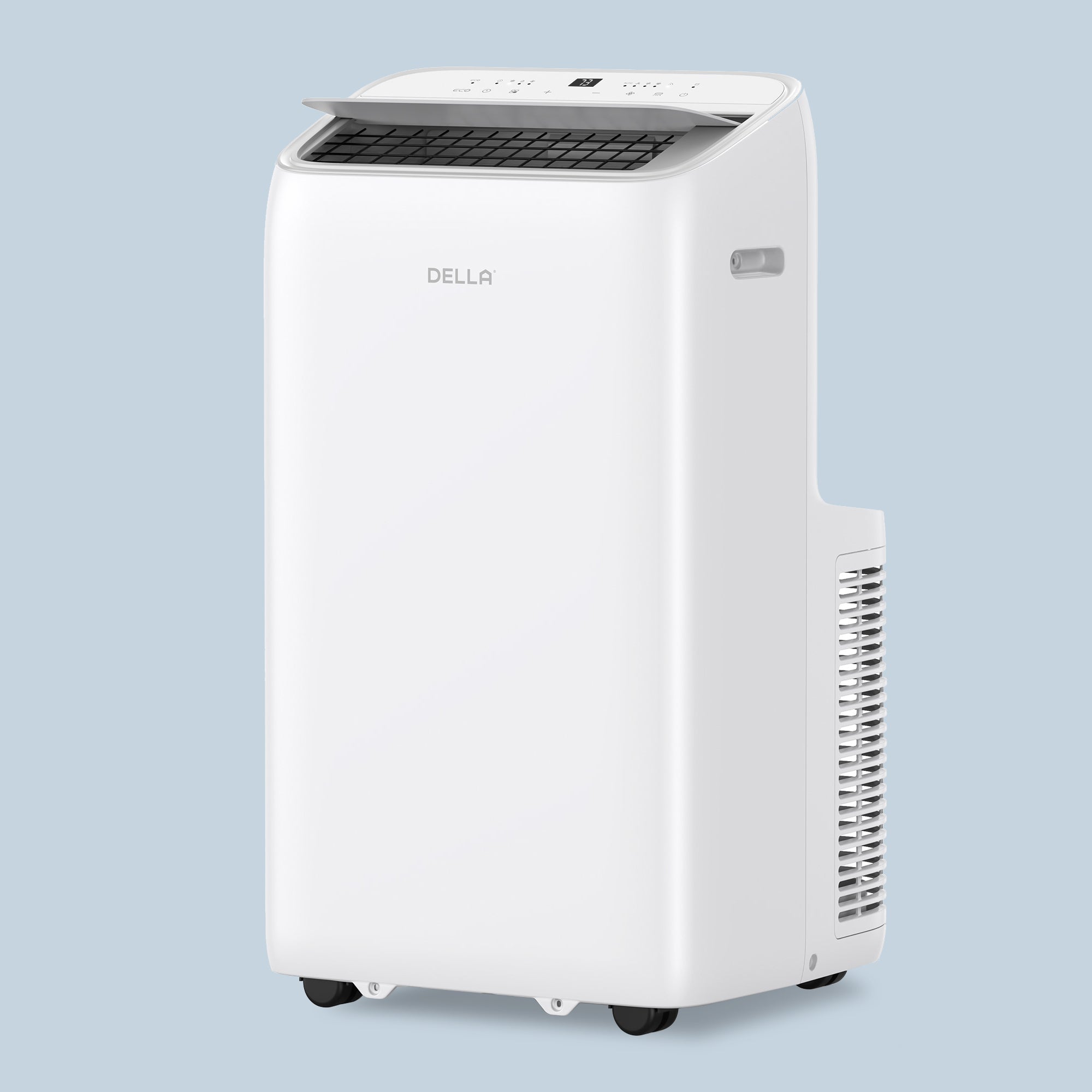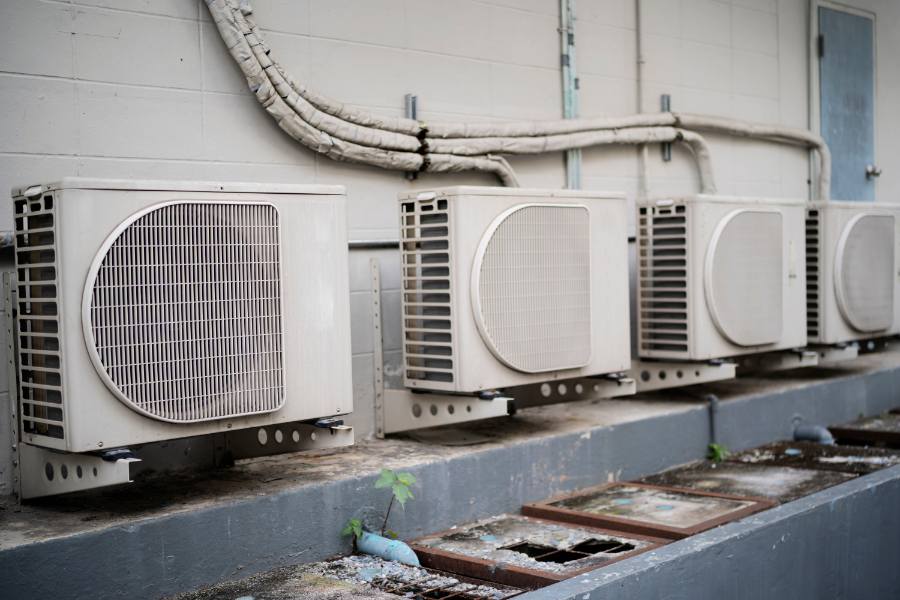How many zones can one mini-split system handle?” If you’re considering installing a ductless mini split system, this question is probably top of mind. Mini-splits are praised for their flexibility, but their “zone coverage” depends on factors like your home’s size, layout, and even your local climate.
This guide breaks down everything you need to know:
-
What a “zone” really means in mini-split terms.
-
The pros and cons of multi-zone systems vs. single-zone setups.
-
How many zones your home might need.
-
The maximum number of zones a single system can support.
We’ll also share practical tips, like why outdoor unit placement matters more than you think. Let’s dive in!
What Is a Zone in a Mini-Split System?
A “zone” in a mini-split system refers to a designated area or room that can be heated or cooled independently. Each zone is controlled by its own indoor unit (e.g., a wall-mounted or ceiling cassette) connected to a shared outdoor unit.
Key characteristics of a zone:
-
Individual temperature control: Adjust settings for one zone without affecting others.
-
Dedicated indoor unit: Each zone requires a separate indoor unit, linked via refrigerant lines to the outdoor compressor.
-
Energy efficiency: Zones allow targeted climate control, reducing energy waste in unused spaces.

Multi-Zone VS. Single-Zone Mini-Splits: Pros and Cons
Multi-zone and single-zone mini-splits serve different needs. Here’s a balanced comparison:
Multi-Zone Systems
Pros:
-
Customized comfort: Multi head mini splits can control temperatures independently in multiple rooms (e.g., bedrooms, living areas).
-
Space efficiency: One outdoor unit supports 2–8 indoor units, reducing exterior clutter.
-
Energy savings: Avoid heating/cooling unused zones.
Cons:
-
Higher upfront cost: More indoor units mean higher installation expenses.
-
Complex installation: Requires careful planning of refrigerant line lengths and electrical capacity.
-
Shared capacity: Total heating/cooling output is split across zones (e.g., running all zones at once may reduce efficiency).
Single-Zone Systems
Pros:
-
Lower cost: Ideal as an air conditioner for small room or open area, offering focused temperature control without complex setups.
-
Simpler installation: Only one indoor/outdoor unit pair is needed.
-
Full capacity focus: Delivers 100% of the system’s power to one zone.
Cons:
-
Limited flexibility: Cannot expand to additional rooms without installing a new system.
-
Less efficient for larger homes: Multiple single-zone systems may cost more long-term.
Maximum Zones Supported by Mini-Split Systems
Most residential mini-split systems support 2 to 8 zones mini splits. A 24,000 BTU outdoor unit may support 4 zones (e.g., four 6,000 BTU indoor units), while a 48,000 BTU unit can cover 8 zones.

Factors Affecting the Number of Mini Splits Zones
1. Number of Rooms
The number of mini-split zones correlates directly with room count: small homes (1–4 rooms) typically require 2 to 4 zones mini splits, mid-sized homes (5–8 rooms) need 5 to 6 zones mini splits, and large homes (8+ rooms) often utilize 7 to 8 zones mini splits.
Each room generally forms its own zone for temperature control, though low-usage spaces in mid-sized or large homes may merge with adjacent areas to optimize efficiency. While functional distinctions (e.g., activity levels or occupancy patterns) can refine zoning priorities, total room quantity remains the primary determinant.
2. Home Size and Square Footage
The number of mini splits zones is directly influenced by a home’s total square footage. Below is a detailed breakdown of zone recommendations based on home size:
For homes under 1,200 sq ft, 1 to 3 zones mini splits are typically sufficient to cover compact living spaces such as studio apartments or small 1–2 bedroom homes.
In homes ranging from 1,200–1,800 sq ft, 2 to 4 zones mini splits are recommended. This range often includes 2–3 bedroom homes or open-concept townhouses.
Larger homes between 1,800–2,500 sq ft generally require 3 to 5 zones mini splits. These might include 3–4 bedroom residences with separate living and dining areas.
For 2,500–3,500 sq ft properties, 4–6 zones are ideal. Multi-story homes or those with distinct functional areas (e.g., home offices, basements) benefit from this level of granularity.
In 3,500–4,500 sq ft homes, 5–7 zones ensure precise climate control across expansive layouts, such as large single-family homes with multiple floors or guest suites.
Properties exceeding 4,500 sq ft may need 6–8 zones or more, especially if they include complex layouts, high ceilings, or specialized rooms like media theaters or sunrooms.
|
Home Size |
Recommended Zones |
Example Applications |
|
<1,200 sq ft |
1–3 zones |
Studio apartments, tiny homes |
|
1,200–1,800 sq ft |
2–4 zones |
2–3 bedroom homes, townhouses |
|
1,800–2,500 sq ft |
3–5 zones |
3–4 bedroom homes, open-concept layouts |
|
2,500–3,500 sq ft |
4–6 zones |
Multi-story homes, split-level designs |
|
3,500–4,500 sq ft |
5–7 zones |
Large single-family homes, estates |
|
4,500+ sq ft |
6–8+ zones |
Luxury residences, multi-wing properties |
3. Climate and Insulation Quality
The number of mini split zones a system can support is influenced by both climate conditions and insulation quality.
In regions with extreme temperatures—such as very hot or cold climates—each zone may require 10–15% more BTU capacity to maintain consistent comfort. This increased BTU allocation per zone can reduce the total number of zones a single system can efficiently manage.
Similarly, poor insulation quality (e.g., single-pane windows, unsealed ducts, or insufficient wall insulation) forces the system to dedicate additional BTU output (about 20%) to each zone to offset energy losses, which limits the overall zone count that the system can handle.
4. BTU Capacity and Zone Allocation
Outdoor Unit Capacity and Zone Allocation
The total BTU capacity of the outdoor unit is the primary constraint determining how many zones a mini-split system can support. Each indoor unit’s BTU demand must be carefully balanced against the outdoor unit’s total output to avoid overloading the multi head mini splits system. Below are common configurations for different capacities:
24,000 BTU Mini Splits AC System:
-
4 zones at 6,000 BTU each (e.g., small bedrooms or home offices).
-
2 zones at 12,000 BTU each (e.g., open-plan living rooms or kitchens).
-
Hybrid: 1×12,000 BTU mini splits + 2×6,000 BTU zones (e.g., a master bedroom and two guest rooms).
-
6 zones at 6,000 BTU for compact spaces.
-
3 zones at 12,000 BTU for large communal areas.
-
Hybrid: 2×12,000 BTU air conditioner + 2×6,000 BTU zones (e.g., living room, kitchen, and two bedrooms).
-
8 zones at 6,000 BTU for multi-room applications.
-
4 zones at 12,000 BTU for high-traffic spaces.
-
Hybrid: 3×12,000 BTU + 3×6,000 BTU zones (e.g., great room, basement, and three bedrooms).
60,000 BTU Mini Splits AC System:
-
10 zones at 6,000 BTU for extensive zoning.
-
5 zones at 12,000 BTU for large open areas.
-
Hybrid: 4×12,000 BTU + 4×6,000 BTU zones (e.g., dual living areas, garage studio, and four bedrooms).
-
12 zones at 6,000 BTU for estates or multi-family units.
-
6 zones at 12,000 BTU for commercial-grade spaces.
-
Hybrid: 5×12,000 BTU + 5×6,000 BTU zones (e.g., home theater, gym, and five bedrooms).
84,000 BTU Mini Splits AC System:
-
14 zones at 6,000 BTU for ultra-large properties.
-
7 zones at 12,000 BTU for industrial-scale applications.
-
Hybrid: 6×12,000 BTU + 6×6,000 BTU zones (e.g., multi-wing mansions with guesthouses).
Critical Rules
The sum of all indoor ductless mini split units’ BTU must never exceed the outdoor unit’s capacity. However, factors like refrigerant line length and electrical load may limit real-world zone counts.

How Many Zones Do You Need?
-
High-Use vs. Low-Use Spaces: Prioritize to position mini splits units for frequently occupied areas (e.g., bedrooms, living rooms) over spare rooms or storage areas.
-
Occupancy Patterns: If multiple family members prefer different temperatures, adding more mini splits zones provides personalized comfort.
-
Budget Constraints: While more zones offer flexibility, they also raise upfront costs. Balance needs with affordability.
Let's take an example. A family of four in a 2,000 sq ft home might opt for 4 zones (master bedroom, kids’ rooms, living room, kitchen). A home office used sporadically could share a zone with an adjacent guest room.
Do You Need a Mini-Split in Every Room?
While mini-splits provide zoned comfort, installing a unit in every room is rarely necessary or cost-effective. Instead, strategically group adjacent spaces with similar usage patterns—like combining a laundry room and bathroom into one zone—or use a single high-capacity unit for open-concept areas like living-dining spaces.
Reserve individual units for rooms with unique temperature needs, such as sunrooms prone to overheating or home theaters requiring quiet operation.
For infrequently used spaces like guest bedrooms or storage areas, supplement mini-split coverage with energy-efficient alternatives like ceiling fans or portable heaters.
The goal is balancing personalized comfort with practicality: prioritize high-traffic zones while avoiding overloading your system with redundant units.
Can You Add Zones to an Existing Mini-Split?
Expanding your mini-split system’s zones is possible if these three conditions are met:
Available BTU Capacity
The outdoor unit’s total cooling/heating capacity must exceed the combined BTU demand of all existing and proposed indoor units.
Refrigerant Line Feasibility
The new mini split AC unit refrigerant lines are within 100 feet (30 meters) and elevation difference is under 50 feet (15 meters). Longer lines reduce efficiency and may require costly upgrades.
Electrical System Compatibility
Verify that your electrical panel can support the additional amperage (usually 5–15 amps per indoor unit). If your older home is with 100-amp panels, you may need upgrades before adding multiple zones.
Where Is the Best Mini Split Outdoor Unit Placement?
-
Shaded, Well-Ventilated Area: Avoid direct sunlight and ensure at least 2–3 feet of clearance around the unit for airflow.
-
Proximity to Indoor Units: Keep refrigerant lines under 50 feet to minimize energy loss. For longer runs, consult an HVAC professional.
-
Noise Considerations: Place the unit away from bedrooms or patios—condensers can generate 50–75 decibels.
-
Elevation: Install on a raised platform in snowy climates to prevent blockage.
Bad Locations:
-
Enclosed spaces (e.g., tight alcoves) that trap heat.
-
Near dryer vents or grills (debris clogs coils).
Conclusion
Determining the number of zones a mini-split system can handle depends on factors like your home’s size, layout, climate, and BTU capacity. Ready to enhance your home’s comfort? Visit Della to explore our selection of practical and reliable multi-zone mini-splits, ranging from 2-zone to 5-zone systems, and find the perfect solution for your needs!
Read More:
8 Steps to Install a Mini Split Air Conditioner Easily
What Size of Mini Split Air Conditioner Do I Need?
How Does a Mini Split Air Conditioner Work?








LEAVE A COMMENT
All comments are moderated before being published.
This site is protected by hCaptcha and the hCaptcha Privacy Policy and Terms of Service apply.